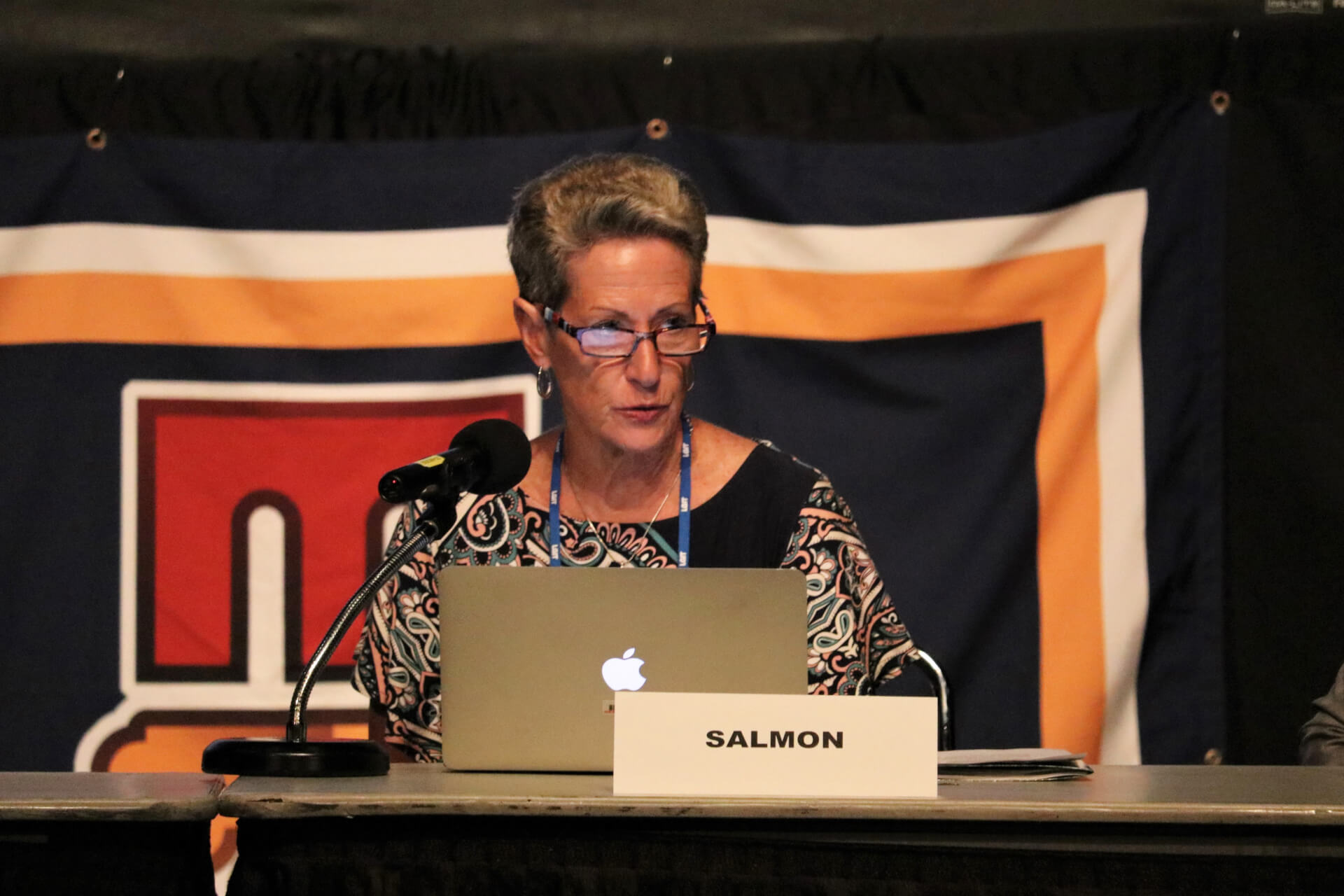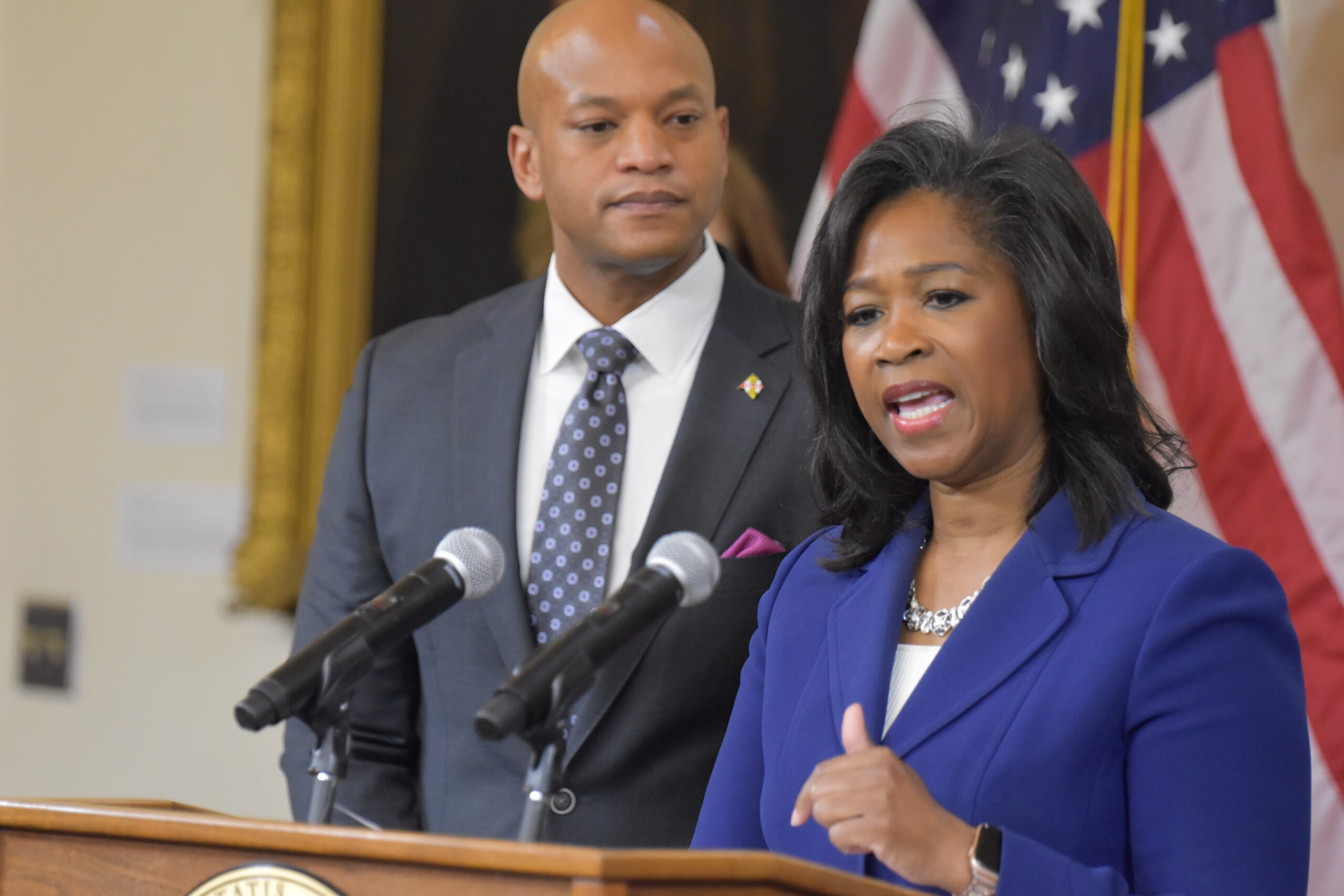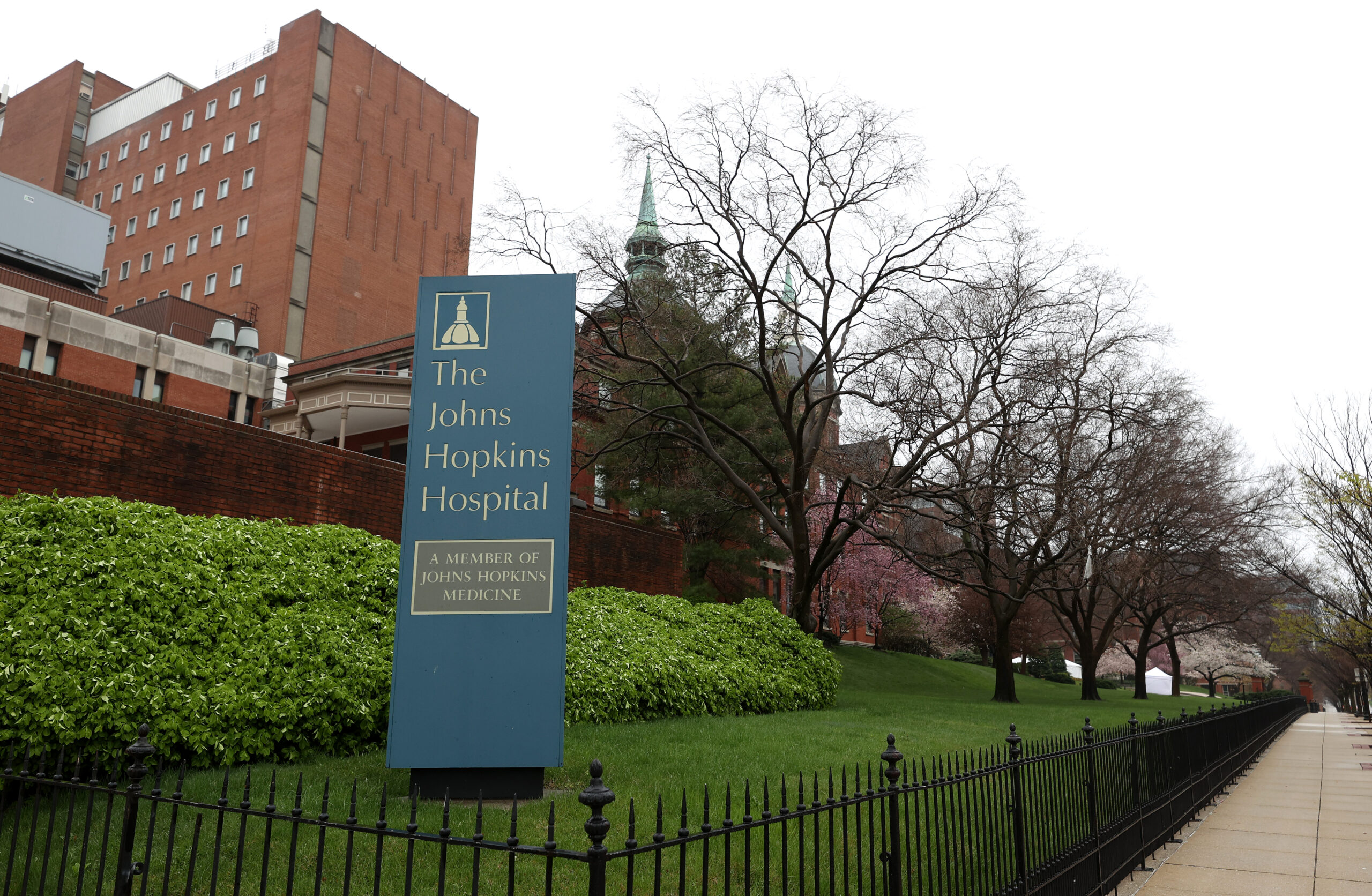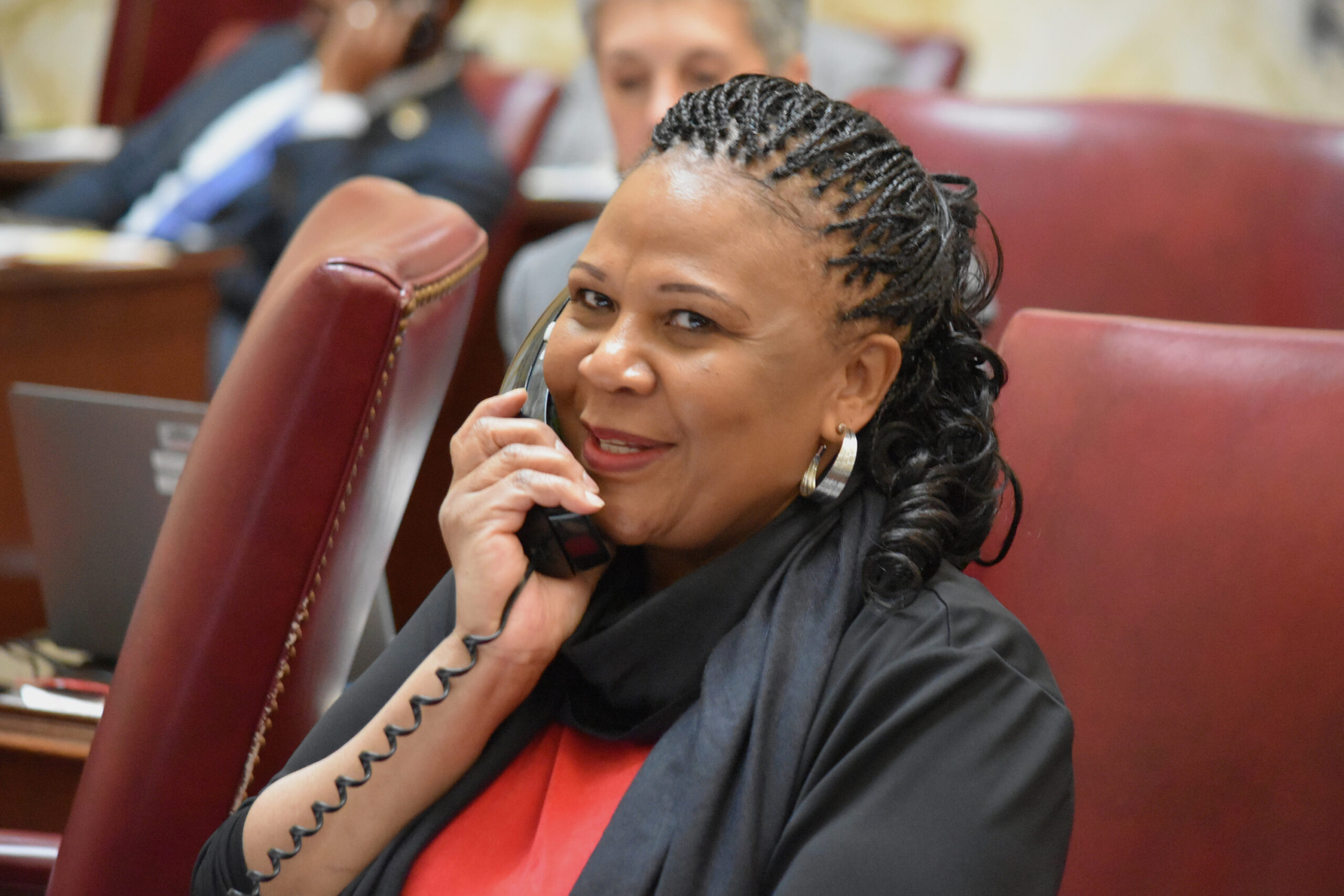Looking Ahead, Lawmakers Hear ‘Distance Learning’ May Be Necessary in Fall

While state policymakers grapple with the multiple and immediate crises brought about by the COVID-19 pandemic, some are also trying to look a few months down the road to when the public health emergency may — or may not — be abating.
During the weekly teleconferenced meeting Wednesday of the General Assembly’s Joint COVID-19 Response Legislative Workgroup, experts spoke briefly about how a post-crisis Maryland might return to normal.
The main takeaway: It won’t be like flipping a switch. And Karen B. Salmon, the state superintendent of Education, warned that “distance learning” may have to be continued into the beginning of the next school year.
“It’s not done and done at that point,” said Joshua M. Sharfstein, a former Maryland Health secretary and vice dean for Public Health Practice and Community Engagement at the Johns Hopkins Bloomberg School of Public Health. “It’s not turning an off and on switch. It’s a dimmer metaphor.”
Marylanders will have to get used to the idea that they’ll only be able to return to their normal lives slowly, Sharfstein said — just as a dimmer brings the light up slowly. But it’s also possible, if a second wave of the virus hits, that the light may have to dimmed or shut off completely for another undefined period, he said.
Sharfstein and other public health experts told lawmakers that there aren’t enough data about how other states and countries are beginning to emerge from the spike in coronavirus cases to determine how Maryland should proceed when the worst is over.
But the state’s education system, already on lockdown for almost four weeks, could see significant and permanent change, officials said.
“I’m not sure we are going to be doing school in the same way going forward,” Salmon told lawmakers.
While state schools are shuttered until at least April 27, Salmon said the state Board of Education is set to meet twice over the next several days, and while she did not say so, it seems inevitable that schools will stay closed for the duration of the academic year.
But Salmon also suggested that local school districts should be prepared to extend distance learning, the home-based instruction — which is still only beginning to get under way in an organized fashion — into the new school year, if health officials deem that necessary.
During the videoconference, Sen. Paul G. Pinsky (D-Prince George’s), the chairman of the Education, Health and Environmental Affairs Committee, wondered whether the pandemic — and the prospect that students could miss almost half a year of classroom instruction, if summer vacation is factored in — should prompt officials to consider moving to a 12-month school calendar.
“It seems like an ideal time to begin a conversation” about the concept, Pinsky said.
In a letter sent Tuesday to Salmon, members of the state school board and other education leaders, Pinsky laid out his concerns and suggested remedies at greater length.
“I suggest an immediate conversation about starting year-round schooling, either in pilot areas or countywide, beginning, possibly, this summer or next,” Pinsky wrote. “Additionally, and more importantly, the conversation should not be limited to making up for the time lost as a result of the coronavirus. Consideration, particularly if it proves successful in the short term, should be given for ongoing implementation.
“We are in a unique time with major, immediate instructional challenges: not only do we need to do our best to salvage learning from home during the possibly next thirteen weeks, but longer term, how do we make up for lost learning and get students back on grade level?
“At a minimum, I would suggest considering the use of some of the coming summer (2020) and/or next summer (2021).”
On the video chat with legislative leaders, Salmon stopped short of endorsing Pinsky’s proposal, but said that a year-round school calendar would be one of many issues that top Maryland educators would be discussing in the weeks ahead. In the short term, she said, all high school seniors will graduate and all other K-12 students will be promoted to the next grade.
Salmon was due to retire on June 30 but has agreed to serve another year for the sake of continuity in the midst of the pandemic.
“I’m really focusing much of our resources on the expansion and accountability wrapped around online learning and distance learning,” she said. “That’s going to be a our focus right now, because it has to be.”
‘Persons, places and things’
Maryland Health Secretary Robert R. Neall also spoke to the lawmakers’ workgroup Wednesday. He described the state’s response to the public health crisis as being focused on “persons, places and things.”
Neall said the state is working to beef up its public health system by drafting medical and nursing students who are about to graduate into regular duty, using younger medical students at health care facilities when possible, and drafting medical retirees and other volunteers into a “medical reserve corps.”
The state is also looking to find as many alternative care sites as possible to the state’s hospitals and other medical centers, Neall said.
“We’re trying to stand up a temporary system that is two-thirds the size of the current system,” he said.
As of Wednesday morning, the state was reporting 5,529 known cases of COVID-19 and 121 deaths from the virus.
Neall said 92% of the reported cases have been in “the Baltimore-Washington corridor,” and that 80% of the fatalities have been people over the age of 60.
Neall said the state currently has 1,078 ventilators available and that he has ordered twice that number. But he conceded that in general, ventilators, personal protective equipment, lab equipment and drugs are in short supply in Maryland — as they are throughout the country.
Neall said his agency has just learned that the drugs used to intubate patients are also running low in the state, so officials are scrambling to make up the shortfall.
The number of known COVID-19 cases in the state jumped by 1,158 from Tuesday and the number of deaths increased by 21 — high numbers that state officials attribute in part to the increased number of tests being reported back.
The number of available and reportable tests in Maryland is likely to increase considerably in coming weeks, Neall said: The University of Maryland Medical Center in Baltimore is setting up a facility that will be able to handle 20,000 tests a day.
A NOTE TO OUR READERS
In these uncertain times, we’re here for you. We have a page dedicated to our reporting on COVID-19 in Maryland. We’ll continue to report with an eye toward the humanity of our sources and a commitment to public accountability.
Stay informed by signing up for the Maryland Matters Memo — our daily morning news roundup, delivered to your inbox. Free.
And if you are able, please consider a tax-deductible contribution to support our nonprofit newsroom.
We’re burning the candle at both ends — doing all we can to keep ourselves, and everyone else, as safe as possible — as we keep you informed.
Please take care!




 Creative Commons Attribution
Creative Commons Attribution